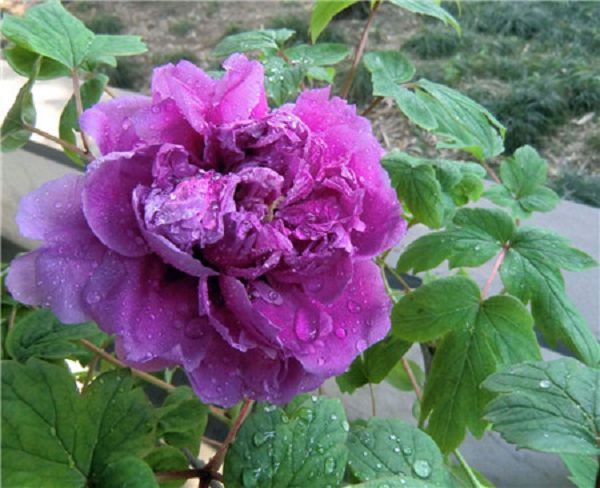Application of four striping techniques in Flower Seedling cultivation
Ordinary pressing is suitable for tufted flowers and trees. Such as Lamei, Yingchun, jasmine and so on. Select the 1-year-old 2-year-old branch near the ground at the base, first cut or ring-peel it with a knife under the node, then make a groove along the edge of the basin or rhizosphere, bury the branch in the soil, 10-12 cm deep, and clamp the branch down into a U-shaped shape with a wire nest to prevent rebound. Then cover the soil, expose the top to the ground, and tie up the stick. This method is mostly carried out in early spring or late autumn, spring striping is cut off in autumn, autumn striping is cut in autumn, and the following spring is cut off.
High-altitude pressing is suitable for flowers and trees that do not have tillering buds at the base, branches are not easy to bend, and cuttings are not easy to survive. Such as rose, sweet-scented osmanthus, Milan, etc. High pressure is carried out in late spring and early summer. 2-year-old sturdy branches are generally selected for ring peeling or scratching under the nodes, which is as deep as the cortex and 1.5 times as wide as the branch diameter. After being treated with rooting hormone, tie up the plastic film at the lower end of the incision about 5 cm, then roll it up, fill it with moss or soil, tie up the upper mouth, and leave a little gap to facilitate watering and receiving Rain Water. After that, the substrate is often kept moist, and the roots are cut off from the ground or potted in autumn. If you keep it for another 1 ~ 2 years, it can blossom and watch.
Recumbent striping is suitable for long branches or vine flowers and trees. Such as Fujimoto rose, ivy, Lingxiao and so on. Make the branches and stems bend and lie flat in the soil or shallow ditches, cover them with soil, and cut off from the mother plant after rooting. It can also be cut with a knife under each node, and most young plants can be obtained at one time.
Soil pressing is suitable for flowers and trees with many tillering buds and branches that are not easy to bend. Such as eight Immortals, June Snow, Golden Finch, sticking Begonia and so on. Before pressing the base of the skin will be cut, and then upward soil 20-30 cm, often keep the soil moist. After rooting, dig the soil, cut off from the mother plant, and cultivate respectively.
Flower and tree striping is to bury the branches of the plant in the soil, use the mother nutrition to germinate new roots, cut off and cultivate into new plants. Its characteristic is to promote its rooting without leaving the mother plant, the survival rate is high, the shape is easy, but the operation is annoying, the reproduction quantity is small, and it is suitable for family use. Striping propagation can be operated in different species of flowers and trees in the above way.
Related
- What if the leaves of potted flowers turn yellow?
- Florescence Control of several Flowers
- Anti-freezing technology and post-freezing nursing technology of flowers
- What is the classification of flowers? What are the common methods of flower classification?
- Prevention and control of alkali and acid damage of flowers in courtyard
- Technology of Anti-freezing and restoring growth of Flower seedlings in greenhouse and greenhouse
- How does flower fertilization not hurt the root? Fertilization technology of flowers
- Key points of disinfection in flower greenhouse
- Several pesticides that are banned or used cautiously in flowers
- How to fertilize the flowers that watch the leaves?



